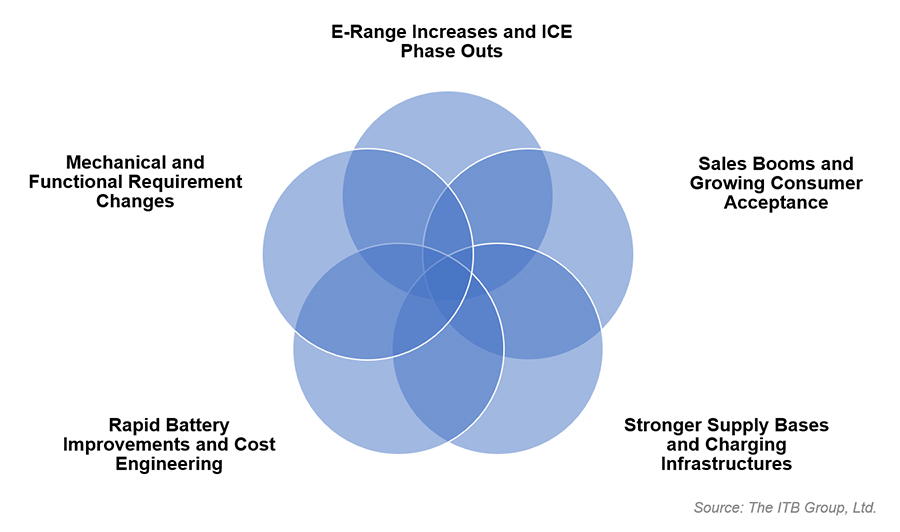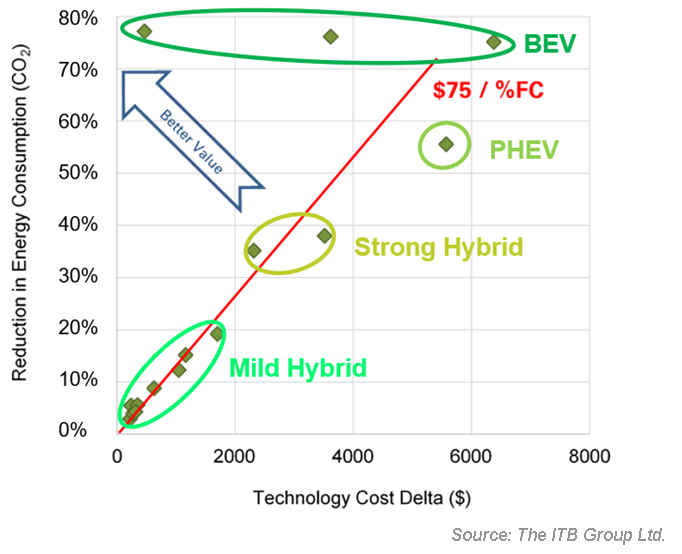- Home
- Electrification
Electrification
The ITB Group has followed the expansion of the global electric car fleet, which exceeded 7 million vehicles in 2019. A surprising 3 million electric vehicles were sold in 2020 despite terrible circumstances, raising the fleet total to ten million vehicles. The strong performance indicates that demand and supply are moving toward each other at an increased pace. Most suppliers have plans in place to address this foundational shift in the automotive industry.

Government policies and investments played a critical role in the development of the electric vehicle market and will raise the stakes of their involvement. Regulatory policies such as California’s ZEV program required that by 2025, eight percent of an OEM’s sales would need to comprise electric vehicles. More recently, Governor Newsom issued a new California ZEV order calling for all ICE powertrains to be eliminated by 2035, using the Advanced Clean Cars II program focusing on post-2025 model year vehicles. And in the near term, China has recently lowered its 2025 New Energy Vehicles target from 25% to 20%.
In the long term, government-sponsored consumer incentives in many global regions will phase out as the price of electric vehicles becomes more competitive with that for ICE vehicles. Seizing this closing window, Volkswagen has launched an offensive to demonstrate that its ID.3 electric vehicle is a secure investment for consumers, with acquisition costs, running costs, and residual values which are now on par with a comparable ICE vehicle. Simultaneously, vehicle charging infrastructure installation has accelerated stepped forward, with increases in publicly accessible chargers worldwide of which a growing proportion is fast charging.
Substantial federal, regional, and local grants and tax incentives have been given to OEMs to enable the creation of electric vehicle manufacturing plants. Deeper in the supply base, government policies are being used to develop improved availability of battery packs. Since the pack is a critical cost component of an electric vehicle, facilitating the production of battery packs is an important role for governments. In February 2021, the U.S. Trade Commission made an uncharacteristic move and banned SK Innovation’s participation in the U.S. battery market for 10 years after judging that SK Innovation had stolen intellectual property from LG Chemical. This action made impacts on OEM launch schedules.
To bring battery pack costs down closer to a $100/kWh level, external and internal industry participants have been analyzing every aspect of the battery pack cost make-up. This is an extremely complex task since simultaneously with reducing the pack cost, there is the ongoing need for improving performance.
Battery range has become one of the top defining features of a car, with significant changes in design, software, and performance happening at three-to-six month intervals. For long term future body architecture planning, battery packaging will continue to reduce available cabin space, causing seating, roof, and floor structures to be re-evaluated for integration prospects.

ITB has developed a metric for comparing conventional and hybrid vehicle fuel consumption related technologies. Any serious technology candidate for model year 2025 will need to have a landed cost less than $75 dollars when providing a 1% improvement in energy consumption. Of the competing powertrains, battery electric vehicles show the greatest potential to meet this fleet level metric. ITB can assist companies with finding the right fit entry into electrification-related technologies.
The recent uptick in development of hydrogen fuel cell delivery systems is yet another side-shoot of electrification. With battery electric vehicles well on their way to critical mass, it is also time to make 15-year plans to develop products and solutions for hydrogen platforms. ITB can assist companies with finding the right entry-level fit into electrification-related technologies.
For more information, please contact:

Dr. Joel Kopinsky, Managing Director and Co-Founder
Energy Storage, M&A, and Start-Ups






